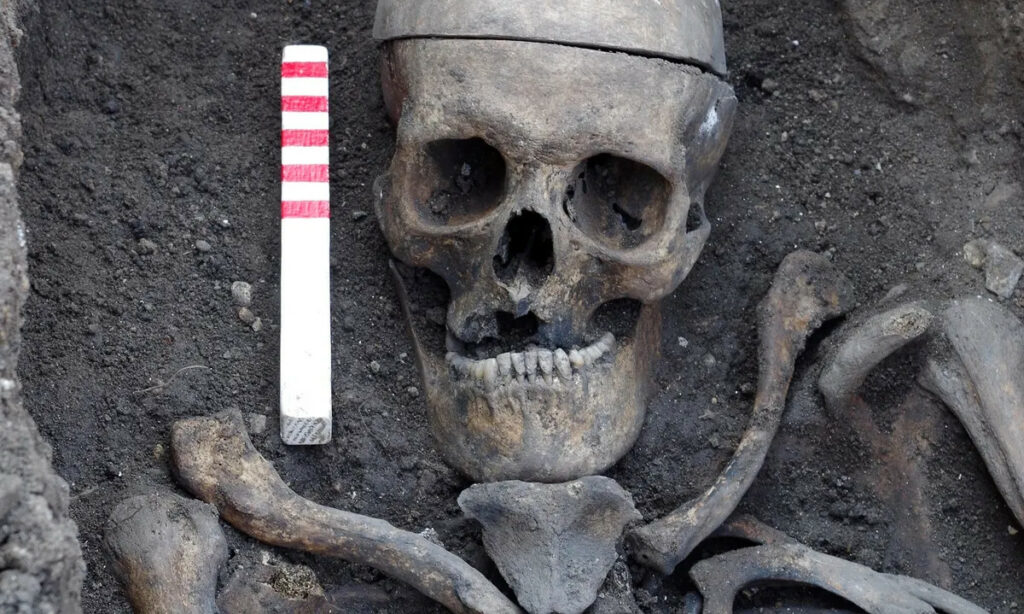As reported by The Guardian, archaeologists unearthing a 19th-century burial site in southwest London have come across the remains of 100 individuals. Their skeletons serve as a poignant reminder of the harsh and violent realities of life during the Dickensian era. Among the remains were a suspected bare-knuckle boxer, a murdered woman with a fractured nose, and a young girl who passed away before reaching her second birthday.
According to Kirsten Egging Dinwiddy, a senior osteoarchaeologist with Wessex Archaeology, many residents in the area during that period lived in extreme poverty, enduring “a life of drudgery and mere survival.” The remains were discovered at the New Covent Garden market, which was built over a cemetery associated with a local church that had been partially cleared in the 1960s.

Included among the skeletal findings was the skull of a woman who suffered a fatal stab wound to the head. Dinwiddy noted that the remains exhibited signs of harsh working conditions, toxic environments, widespread diseases, physical deformities, malnutrition, and lethal violence. The analysis indicated high infection rates, including syphilis.
One woman found had syphilis, a broken nose, and evidence suggesting she had been stabbed in her right ear with a dagger, leading archaeologists to believe she was murdered. Another male skeleton, also diagnosed with syphilis, stood nearly six feet tall—an impressive height for that era. A coffin plate inscribed “Jane Clara Jay. Died 18 March aged one year. Amen.” accompanied the remains of an infant.

This man exhibited a flattened nose and a depression on his left brow, indicating he had likely endured multiple violent encounters. His knuckles bore signs of fighting, hinting at a possible background as a bare-knuckle boxer, a popular form of entertainment during that time. Ms. Egging Dinwiddy remarked that he would have had a “distinctive look” and “less than winning smile.”
Tragically, infant mortality rates were exceedingly high in the 19th century, and the discovery of little Jane Clara Jay underscores the severity of those times. She died in 1847 just shy of her second birthday. Although archaeologists found signs of malnutrition in her remains, the specific cause of her death remains unclear.

